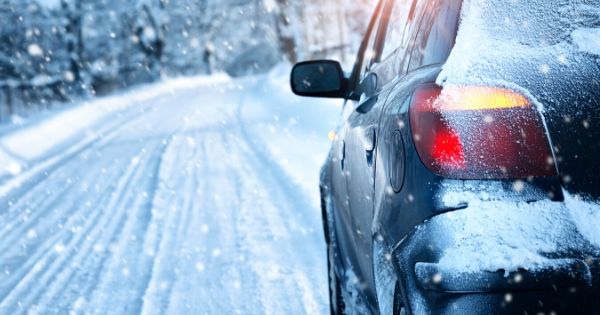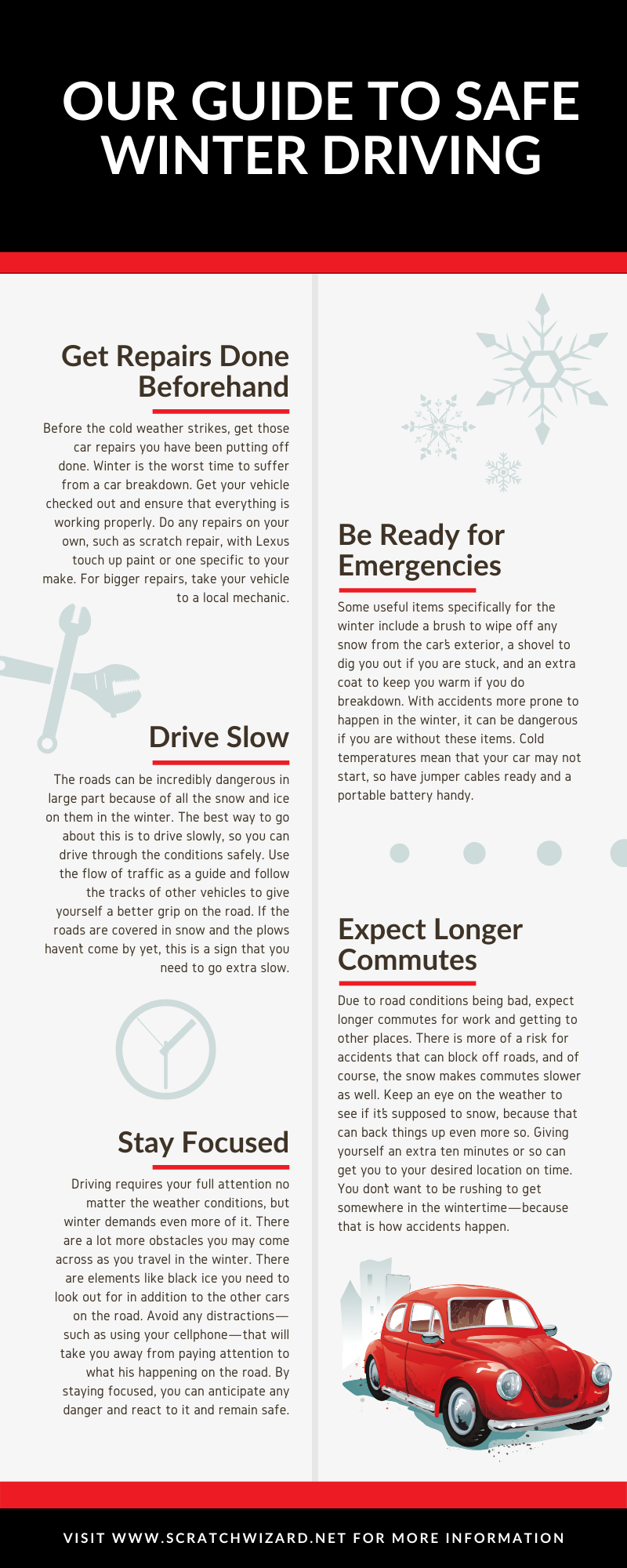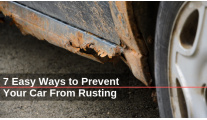Our Guide to Safe Winter Driving

One of the biggest things people fret over when the weather starts to cool is driving. The road can be a dangerous place, but dangers only increase with the wild winter weather. According to the Federal Highway Administration, “Over 1,300 people are killed and more than 116,800 people are injured in vehicle crashes on snowy, slushy or icy pavement annually.” The colder temps require a bit more work and an adjustment to your driving so you can stay safe. Get in the right mindset before the snow hits by following our guide to safe winter driving.
Get Repairs Done Beforehand
Before the cold weather strikes, get those car repairs you have been putting off done. Winter is the worst time to suffer from a car breakdown. Get your vehicle checked out and ensure that everything is working properly. Do any repairs on your own, such as scratch repair, with Lexus touch up paint or one specific to your make. For bigger repairs, take your vehicle to a local mechanic. Winter requires a lot of use from your car, and it is essential that your vehicle is in the best shape possible to handle it.
Be Ready for Emergencies
Another way to be prepared for the upcoming season is to have as much in your car as possible. Some useful items specifically for the winter include a brush to wipe off any snow from the car’s exterior, a shovel to dig you out if you are stuck, and an extra coat to keep you warm if you do breakdown. With accidents more prone to happen in the winter, it can be dangerous if you are without these items. Cold temperatures mean that your car may not start, so have jumper cables ready and a portable battery handy. Keeping these items and being prepared for emergencies is the best thing you can do this winter.
Drive Slow
The roads can be incredibly dangerous in large part because of all the snow and ice on them in the winter. The best way to go about this is to drive slowly, so you can drive through the conditions safely. Use the flow of traffic as a guide and follow the tracks of other vehicles to give yourself a better grip on the road. You may have to judge how good the roads are yourself. If the roads are covered in snow and the plows haven’t come by yet, this is a sign that you need to go extra slow. If you can see the roads’ pavement, then you can probably go the speed limit—but still be extra cautious.
Expect Longer Commutes
Due to road conditions being bad, expect longer commutes for work and getting to other places. There is more of a risk for accidents that can block off roads, and of course, the snow makes commutes slower as well. Keep an eye on the weather to see if it’s supposed to snow, because that can back things up even more so. Giving yourself an extra ten minutes or so can get you to your desired location on time. You don’t want to be rushing to get somewhere in the wintertime—because that is how accidents happen.
Stay Focused
Driving requires your full attention no matter the weather conditions, but winter demands even more of it. There are a lot more obstacles you may come across as you travel in the winter. There are elements like black ice you need to look out for in addition to the other cars on the road. Avoid any distractions—such as using your cellphone—that will take you away from paying attention to what his happening on the road. By staying focused, you can anticipate any danger and react to it and remain safe.
Pump Your Brakes
There are situations where you may find yourself slipping because of snow or ice. This can be a very scary situation, and one you normally don’t have to face in other seasons. Many people will naturally slam on their brakes if they feel like they are losing control. If you are in this situation, you should start pumping your brakes up and down. This will give yourself more traction and bring you to a complete stop. In addition to sliding, pump your brakes if a car in front of you stops immediately or if you are going down a steep hill. Pumping your brakes can not only help avoid serious car damage; it can help prevent a deadly car crash.
Warm Up Your Car
As you travel this winter, one car feature you want to make sure works properly is your heat. An obvious reason to ensure it is working is because you want to remain warm inside your vehicle. However, another reason is because you don’t want your oil to freeze. Before you go anywhere, turn on your car and let it warm up for ten minutes or so before you leave. This will allow time for your car to defrost any ice that might block your vision in addition to warming up all the oil in your car.
Utilize Four-wheel Drive
An excellent car feature that your car may or may not be equipped with is four-wheel drive. With four-wheel drive, your car will get more traction on snow-filled roads that can be difficult and dangerous to drive on. This feature is typically housed in trucks; however, there are similar features like all-wheel drive that can still help you on the road and keep you safe.
Keep Up With Your Driveway
Shoveling your driveway may seem like a pain, but don’t think you can avoid it because snow melts. Not keeping up with your driveway can make things extremely difficult and dangerous during the winter. If you don’t keep up with it, then ice can start to form, which can prevent your car from getting in and out of your driveway. If you have a large driveway, get a snowplow. Another good tactic is to spread salt, so you can melt any ice.




